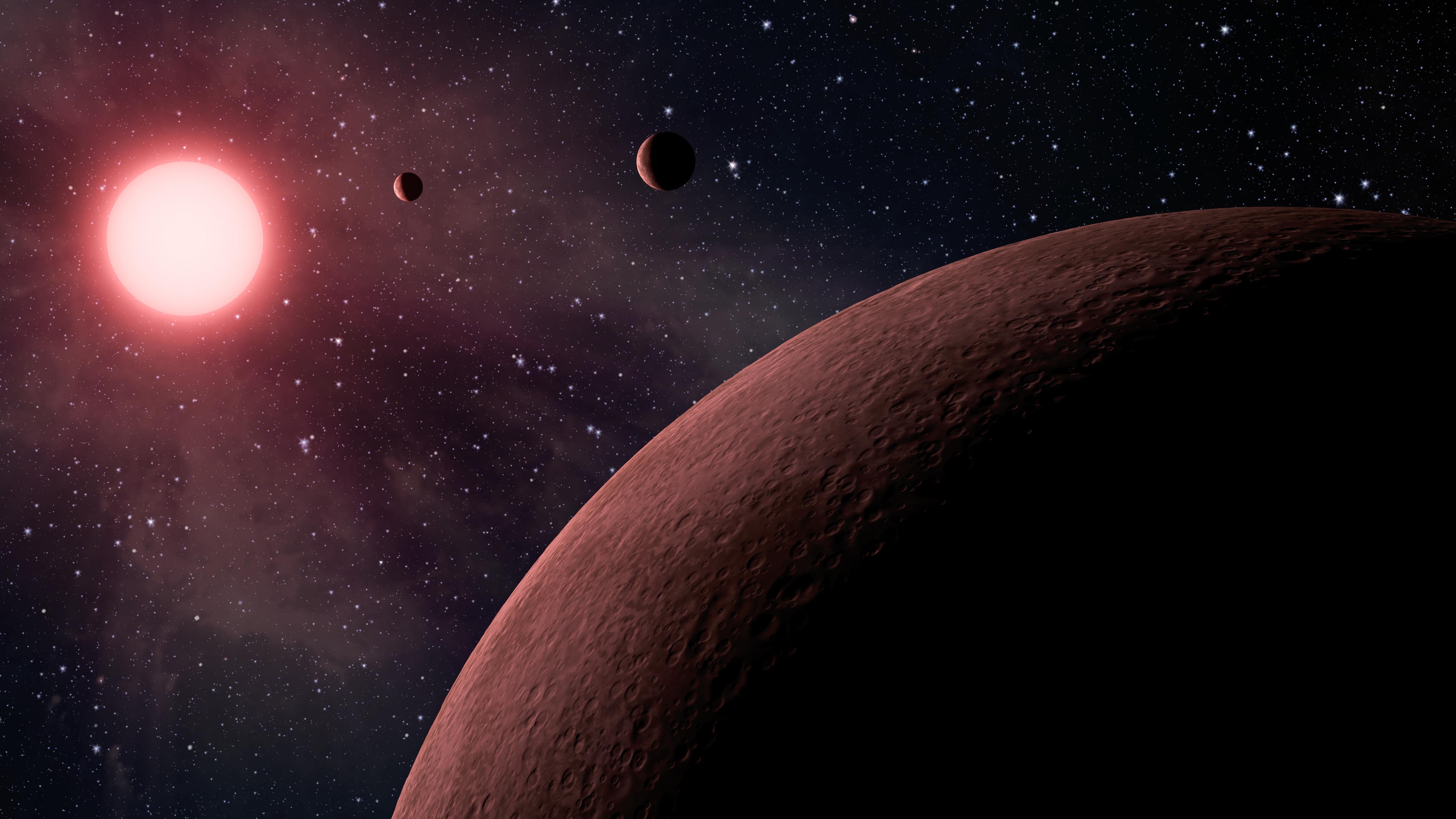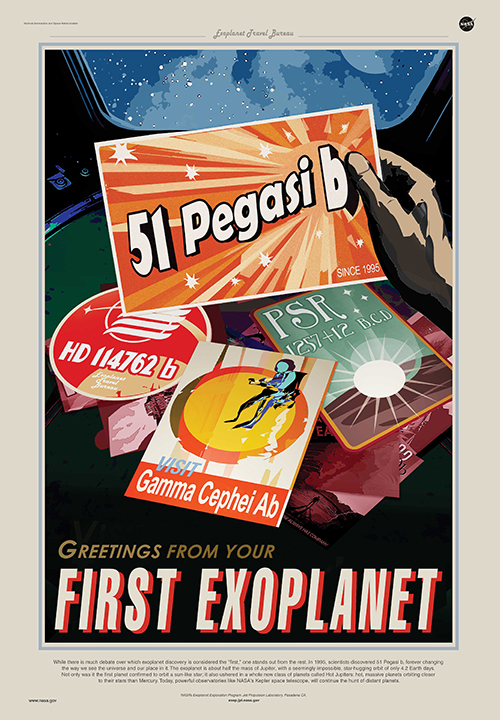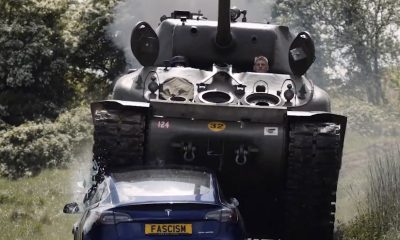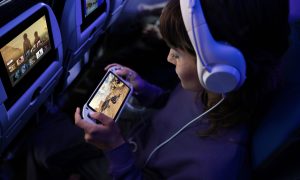

News
Feasibility study suggests use of high-power lasers to contact alien civilizations
We currently have, or could quickly develop, the technology to communicate with nearby alien worlds, according to a study recently published by the Astrophysical Journal. To accomplish such a feat, the study proposes using a 2-megawatt laser, pointed through a 30-meter telescope, to build a beacon with significant enough reach to be detected by civilizations up to thousands of light years away. With over 3,800 exoplanets already confirmed and around 3,000 others awaiting confirmation, communicating with those thought to be habitable is one of the next questions to consider.
If intelligent life were to exist on one of the planets surrounding our nearest stars, messages could potentially be sent between worlds using such a laser beacon in patterns similar to Morse code. A few years between messages might seem stark compared to the rate of exchange we’ve become used to amongst ourselves, and the wait for a first response might be daunting. However, the definitive revelation of not being alone in the universe might be worth the time invested.

In the study conducted at the Massachusettes Institute of Technology, author James R. Clark suggested that the beacon’s initial role would be to attract the attention of alien astronomers similar to how our attention is gained in identifying exoplanets. We study anomalies in the electromagnetic spectrums of other stars to find planets, and thus, our star’s spectrum would potentially seem unusual with a projecting laser beam, meriting more attention.
Clark noted that it would take a minimum of 2MW of energy to stand out against our sun’s infrared signal in a “cursory survey by an extraterrestrial intelligence”, which is how the size and wattage of the beacon were calculated. The feasibility of creating this communication tool was explored as part of a graduate school class Clark was enrolled in, and the study’s co-author is his professor, Kerri Cahoy.
Are there potentially habitable planets close enough to even justify utilizing such a technology? Perhaps. One of the better candidates could be the TRAPPIST-1 planetary system in the constellation Aquarius, where a star boasts at least 7 planets in orbit with rocky surfaces and sizes similar to Earth and Venus. Three have been determined to be potentially habitable.

The 40-light-year distance of the TRAPPIST-1 system from Earth would have a significant communications delay, however. At only 4 light years away, though, the exoplanet Proxima Centauri b, a slightly larger than Earth planet orbiting red dwarf star Proxima Centauri, could be a more promising candidate for finding alien pen pals.
Recent studies have pointed to hopeful prospects for its habitability, thus making a communication tool like the beacon in this study even more relevant. Further discussion would be needed, of course – do we want to reach out to other worlds? But the combination of a potentially habitable planet and the ability to communicate with it is an exciting consideration.
Watch the NASA video below for more information about the TRAPPIST-1 system.
News
Tesla Giga Berlin seems to be using FSD Unsupervised to move Model Y units
Tesla may be doing something quite special in the Giga Berlin-Brandenburg complex.

Tesla may be doing something quite special in the Giga Berlin-Brandenburg complex. Based on observations from a recent drone flyover of the site, it appears that Tesla may also be using FSD Unsupervised to move freshly produced Model Y vehicles to the factory’s staging area.
New Drone Footage
Recent footage of the Giga Berlin complex from longtime Tesla watcher Tobias Lindh included several interesting updates around the Model Y factory. These include a new warehouse that is currently being built, as well as a tunnel is currently being constructed. More interestingly, the drone operator observed that some cars now seem to be moving to Giga Berlin’s distribution area without human drivers.
If the drone operator’s observations prove accurate, it would be quite an impressive accomplishment for Tesla. FSD Unsupervised, after all, has only been confirmed in vehicles that are produced at the Fremont Factory and Gigafactory Texas.
Potential Next Steps
If Giga Berlin is now using FSD Unsupervised to transport some Model Y units from the factory building to the site’s staging area, it might only be a matter of time before Tesla also implements a similar system for Gigafactory Shanghai. The Shanghai-based Tesla plant, after all, is the company’s largest factory by volume, and it also serves as a primary vehicle export hub. FSD Unsupervised could then pave the way for Giga Shanghai to operate in an even more optimal manner.
FSD Unsupervised is the cornerstone of Tesla’s robotaxi business, which is expected to start rolling out in Austin, Texas, next month. Previous reports have suggested that Tesla is pushing hard in its preparations to roll out its robotaxi service this June. Tesla has reportedly even worked and trained with Austin’s first responders from the fire and police departments as part of its robotaxi service preparations.
Check out a recent flyover of the Tesla Giga Berlin complex in the video below.
Investor's Corner
Tesla welcomes Chipotle President Jack Hartung to its Board of Directors
Tesla announced the addition of its new director in a post on social media platform X.

Tesla has welcomed Chipotle president Jack Hartung to its Board of Directors. Hartung will officially start his tenure at the electric vehicle maker on June 1, 2025.
Tesla announced the addition of its new director in a post on social media platform X.
Jack Hartung’s Role
With Hartung’s addition, the Tesla Board will now have nine members. It’s been a while since the company added a new director. Prior to Hartung, the last addition to the Tesla Board was Airbnb co-founder Joe Gebbia back in 2022. As noted in a Reuters report, Hartung will serve on the Tesla Board’s audit committee. He will also retire from his position as president and chief strategy officer at Chipotle, and transition into a senior advisor’s role at the restaurant chain, next month.
Hartung has had a long career in the Mexican grill, joining Chipotle in 2002. He held several positions in the company, most recently serving as Chipotle’s President and Chief Strategy Officer. Tesla highlighted Hartung’s accomplishments in a post on its official account on X.
“Over the past 20+ years under Jack’s financial leadership, Chipotle has seen significant growth with over 3,700 restaurants today across the United States, Canada, the United Kingdom, France, Germany, Kuwait and the United Arab Emirates. Jack was named ‘CFO of the Year’ by Orange County Business Journal and Best CFO in the restaurant category by Institutional Investor,” Tesla wrote in its post on X.
Tesla Board and Musk
Tesla is a controversial company with a controversial CEO, so it is no surprise that the Board of Directors tend to get flak as well. Two weeks ago, for example, Tesla Board Chair Robyn Denholm slammed The Wall Street Journal for publishing an article alleging that company directors had considered a search for a potential successor to Elon Musk. Denholm herself has also been criticized for offloading her TSLA shares.
More recently, news emerged suggesting that the Tesla Board of Directors had formed a special committee aimed at exploring a new pay package for CEO Elon Musk. The committee is reportedly comprised of Tesla board Chair Robyn Denholm and independent director Kathleen Wilson-Thompson, and they would be exploring alternative compensation methods for Musk’s contributions to the company.
News
Tesla posts FSD demonstrations in Australia and France
Tesla is expected to roll out a robotaxi service that uses FSD Unsupervised in Austin, Texas sometime next month.

Tesla definitely seems determined to prove that its Full Self-Driving (FSD) system is capable of operating safely anywhere. This was highlighted by the company in a couple of videos posted on social media platform X, which showed the self-driving system in action in Australia and France.
Tesla is expected to roll out a robotaxi service that uses FSD Unsupervised in Austin, Texas sometime next month.
New FSD Unsupervised Demonstrations
To start off Tesla’s recent demonstrations, the Tesla AI Team posted a video of FSD Supervised being tested in Melbourne, Australia. The video was nearly two minutes long, and it featured FSD navigating the city’s busy inner streets. FSD handled the drive without any issues, even performing Australia’s infamous hook turn at one time. The demonstration was received warmly by the EV community, especially since FSD accomplished all this while operating an RHD vehicle.
Another FSD demonstration, this time posted by the official Tesla Europe & Middle East X account, featured the Supervised self-driving system navigating France’s complicated Arc de Triomphe. The area is challenging, considering that it’s one of the largest roundabouts in the country. FSD Supervised, however, expertly handled the roundabout, pausing for cars as needed and maintaining a safe distance from other vehicles.
Tesla did place a disclaimer on its recent test videos, stating that “FSD (Supervised) engineering test drive in a prototype vehicle driven by a safety driver. For demonstration purposes only. FSD (Supervised) is a hands-on feature that requires driver control of the vehicle and attention on the road at all times. Future activation and use subject to development and regulatory approval.”
FSD Unsupervised
Tesla is not yet rolling out FSD Unsupervised to consumer vehicles. The company, however, has been using the system to transport cars from the Fremont Factory and Giga Texas’ production lines to their respective staging areas. In Giga Texas, freshly produced Model Y units drive completely driverless for 1.4 miles before reaching its staging lot. The Cybertrucks, on the other hand, navigate a Boring Company tunnel on their way to their staging area.
Tesla is planning on releasing a dedicated robotaxi service using Model Y vehicles equipped with FSD Unsupervised in Austin, Texas this June. Previous reports also suggest that Tesla is hard at work preparing for the rollout of its robotaxi service, with the company reportedly testing 300 vehicles around Austin over the past months. Tesla has reportedly also conducted safety tests and training sessions with Austin’s first responders from the fire department and police as part of its robotaxi service preparations.
-

 News2 weeks ago
News2 weeks agoTesla offers legacy Model Y owners an interesting promotion
-

 News1 week ago
News1 week agoTesla Cybertruck Range Extender gets canceled
-

 Elon Musk2 weeks ago
Elon Musk2 weeks agoTesla hints at June 1 launch of Robotaxi platform in Austin
-

 Elon Musk22 hours ago
Elon Musk22 hours agoTesla seems to have fixed one of Full Self-Driving’s most annoying features
-

 News2 weeks ago
News2 weeks agoRobotaxis are already making roads safer, Waymo report reveals
-

 Lifestyle1 week ago
Lifestyle1 week agoAnti-Elon Musk group crushes Tesla Model 3 with Sherman tank–with unexpected results
-

 News1 week ago
News1 week agoStarlink to launch on United Airlines planes by May 15
-

 Lifestyle2 weeks ago
Lifestyle2 weeks agoTesla Model 3 driver is using FSD to travel to Mt. Everest Base Camp





















